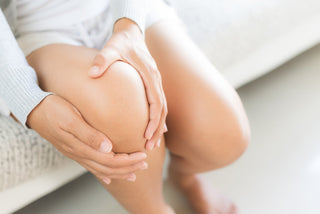In other cases, joint pain may be transient, due to unusual stress on the joint or special effort, for example after intense sporting activity to which the body is not accustomed or a long morning. of gardening.
SYMPTOMS: UNUSUAL JOINT PAIN – STIFFNESS – LESS MOBILE JOINT
HEALTH TIPS
FOOD
We must favor foods rich in omega-3 to the detriment of those rich in omega-6: this is already an approach that will have a favorable impact on the reduction of joint pain. Indeed, omega-3s have an anti-inflammatory action while omega-6s (especially if consumed in large quantities) can increase inflammation in the body. Therefore, all "trans" fats as well as saturated fats should be removed from the diet. Fish, fruits, fresh vegetables and first cold-pressed vegetable oils (more specifically those of olive, flax, canola or hemp) are to be preferred.
HYDRATION
Good hydration allows better elimination of organic waste that can accumulate in the joints. A woman should drink at least 2 liters of water a day while a man should drink at least 3.
PHYSICAL EXERCISE
When muscle tension is too great, joint pain can be amplified. Very gentle exercises including stretching help reduce pain in addition to allowing better tissue oxygenation. In addition, exercising regularly promotes better blood circulation and increases the supply of nutrients to the joint in question. You just have to choose exercises that do not increase stress or tension on the joints.
REST
Rest is essential in order to recover well. However, there must be a balance between rest and exercise. This balance allows for much faster joint healing.
BASIC TIPS
To avoid further damage to painful joints, avoid straining them too hard. Do a few bending exercises with the painful joint but without imposing a load on it to bear or weight to lift. Take the time to properly warm up your muscles and joints before starting any physical activity. Stretch the joint and surrounding muscles well after activity. Although putting a lot of effort into the painful joint is not a good idea, it still needs to be moved to help with the repair and to regain its proper functioning without loss of long-term mobility.

